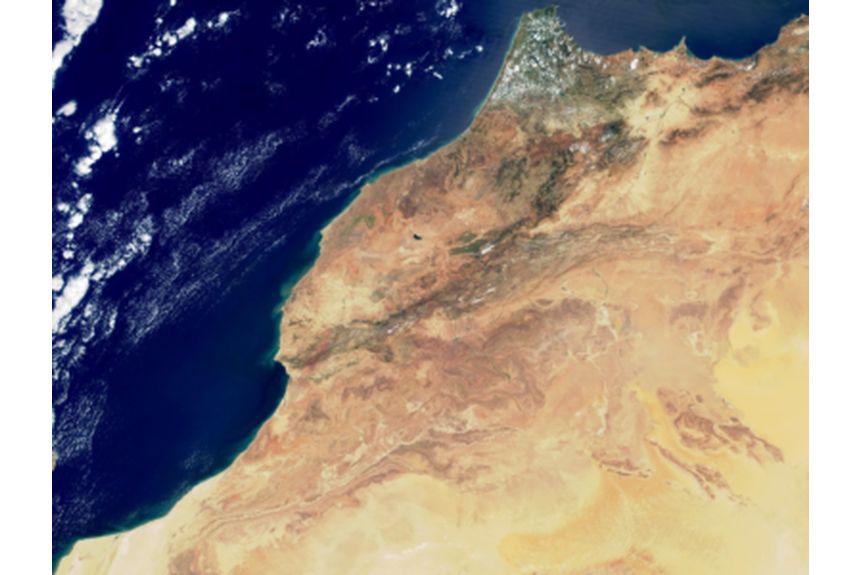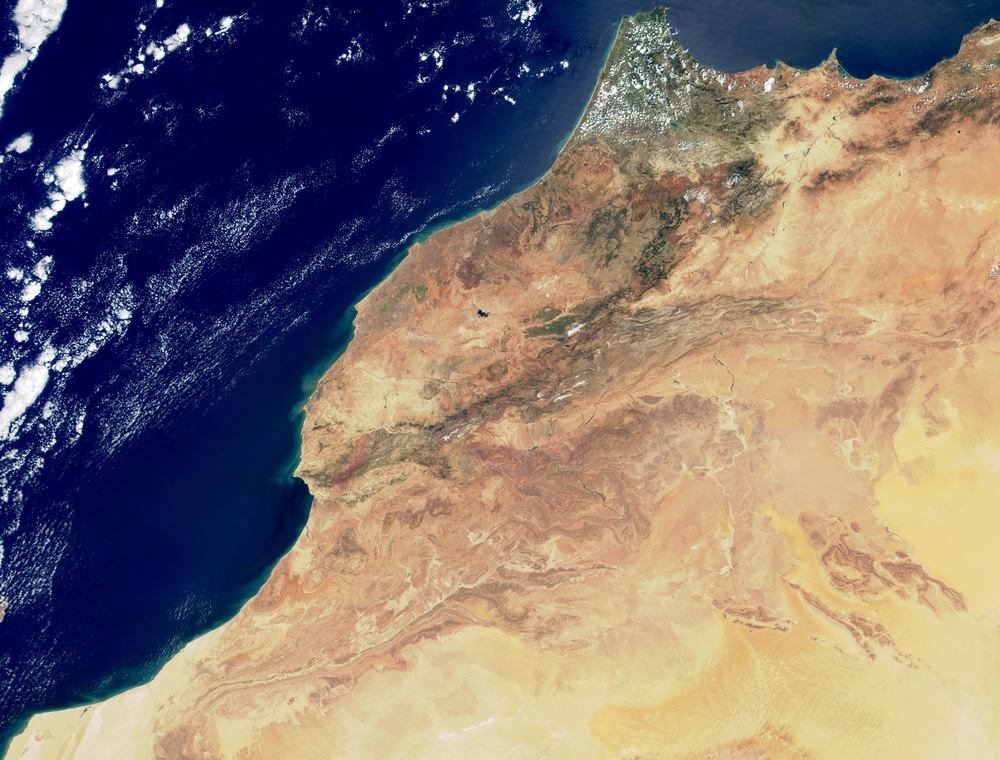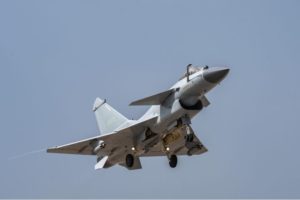
Algeria Sees Threat from Morocco as Western Sahara Conflict Threatens To Reignite
By Lucas Winter
The long-frozen dispute over the Western Sahara, in which Morocco claims sovereignty over the territory and Algeria supports the Polisario Front's independence aspirations, continues to thaw amid sporadic military activity. The latest incident occurred in early April, when a Moroccan UAV purportedly struck a convoy near the border between Mauritania and the Western Sahara.

Morocco from space.
“…Algeria strongly condemns the targeted assassinations by the Kingdom of Morocco using advanced military weapons outside of its internationally recognized borders…”
The long-frozen dispute over the Western Sahara, in which Morocco claims sovereignty over the territory and Algeria supports the Polisario Front’s independence aspirations, continues to thaw amid sporadic military activity. The latest incident occurred in early April, when a Moroccan UAV purportedly struck a convoy near the border between Mauritania and the Western Sahara. There are conflicting reports of what happened. The Algerian government, through its foreign affairs ministry, called it “a targeted assassination” carried out by Morocco outside of its internationally recognized borders. The Qatari-aligned daily al-Araby al-Jadid cites a source that claimed a Moroccan drone had fired eight missiles at two Algerian trucks that had delivered their commercial cargo in Mauritania and were returning to the Algerian city of Tindouf. The Moroccan government did not comment on the matter, but according to the Facebook page of the quasi-official Moroccan military chat forum FAR Maroc, Moroccan authorities had conveyed to the UN that 10 trucks transporting weapons and ammunition were struck within territory that the Polisario Front controls. It added that Polisario had prevented UN forces from accessing the site for 72 hours, during which the group altered the scene to make it appear as if the missiles struck a civilian convoy. The Algerian military’s main articulated concern vis-à-vis Morocco are not UAVs, but rather the broader threat of “new generation warfare.” In a speech immediately following the incident described above, Saïd Chengriha, Chief of Staff of the Algerian military, emphasized the importance of maintaining national cohesion amid external attempts to sow discord through misinformation and influence campaigns. Chengriha has stated on more than one occasion that the key battle for Algeria’s youth is a battle of conscience, “in which new and unconventional weapons are used, and which uses virtual space as its theater of operations, in an attempt to manipulate opinions, especially young people.”
Sources:
Algerian Ministry of Foreign Affairs Twitter account, @Algeria_MFA, 12 April 2022. https://twitter.com/Algeria_MFA/status/1513918713086492676
Algeria strongly condemns the targeted assassinations by the Kingdom of Morocco using advanced military weapons outside of its internationally recognized borders against innocent civilians from three countries of the region.
Source:
“قصف جديد لشاحنات جزائرية في الصحراء قرب الحدود الموريتانية
(New attack on Algerian trucks in the Sahara near the Mauritanian border),” al-Araby al-Jadid (Qatari-aligned daily), 10 April 2022. https://tinyurl.com/ydf7uemn
Local sources told al-Araby al-Jadid that Moroccan drones fired eight missiles at two Algerian trucks, which caused their destruction and the injury of more than two people. They added that the two trucks had unloaded their cargo in Mauritania and were on their way back to the city of Tindouf, in southern Algeria.
Source: FAR Maroc (quasi-official Moroccan military news forum), Facebook page (Arabic), 21 April 2022. https://www.facebook.com/1529080437316937/posts/3255921981299432
Regarding the Bir Lahlu operation on April 10, the [UN] mission confirmed that Morocco had informed that it targeted, in a specific operation, about 10 trucks and vehicles loaded with ammunition and weapons targeting the security of Morocco. However, the Polisario prevented members of the mission from inspecting the site for 72 hours, after which they found only two trucks and a vehicle. It also monitored the presence of another operation near the location of the two trucks, confirming that Polisario had manipulated the scene to prove its allegation that Morocco had targeted civilians.
Source: “Les nouveaux défis exigent la consolidation du front interne,” Algeria Press Service (Algerian oficial news agency), 8 May 2022. https://www.aps.dz/algerie/139409-les-nouveaux-defis-exigent-la-consolidation-du-front-interne-et-une-confiance-totale-dans-les-institutions-de-l-etat
According to El Djeich, “the various challenges which Algeria is currently facing, and which it will have to take up in the future, have led the High Command of the People’s National Army (ANP)… to carry out a vast program of modernization and capacity-renewal of the ANP battle corps and its implementation on the ground, in order to achieve a high level of competence at all levels and therefore operational availability”
… “The real battle that our young people must win today is essentially a battle of conscience, Lieutenant General Saïd Chengriha has said on numerous occasions,” per the Editorial. “It is a battle in which new and unconventional weapons are used, and which uses virtual space as its theater of operations, in an attempt to manipulate opinions, especially young people…”
Image Information:
Image: Morocco from space
Source: NASA, https://www.dvidshub.net/image/751371/morocco-image-day]
Attribution: Public Domain
Distribution A: Approved for public release
Categories:
Tags:
Related Products
Chinese Military Exercises Highlight Improvements in Joint Operations
North Korean Media Stays Quiet Despite Global Concerns






